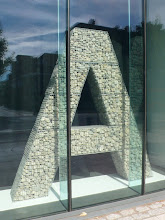
It is interesting to refer back to the original of this article - published in issue 36 of Emigre in 1995. The thrust of the argument is that...
The oversimplistic positioning of typographic work in relation to Modernism and Postmodernism is not a useful dualism within which to debate, describe or develop.
We need to shift from discussing work in terms of these 'isms' to discussing specific context, intention, etc.
Theory can provide new perspectives - designers need to work with other, more theoretical, disciplines.
Functionalities are multiple, relative and context specific—aesthetics have a part to play in typographic communication—a semiological function. Maybe this means the often trotted out Form v Function is another oversimplistic dualism... (This reminds me of Max Bruinsma's editorial in Eye 32 in 1999)
Looking at the design of the article one can immediately see there are 4 or 5 different voices or elements to the text—body text, references, footnotes, a case study and some occasional sides that are actually quite long, so less of footnote and more of some kind of intertextual/hypertextual linking.
Within this complexity there is a traditional hierarchy evident in terms of headings and sub-headings. The different elements are also clearly defined by use of quite different typeface, size, case and positioning.
So.... I think I need to look at the hierarchy in my piece, possibly something that works for the whole document, rather than something that is different for each piece. Each piece has a different number of potential 'levels'—the academic essay could possibly have five, from title through to references, whereas the conversation has far less of these formal devices—perhaps only two—distinctions between the speakers. I also need to integrate the texts in a constructive/meaningful way—to use the 'montage' to make connections, disruptions, etc—it needs to be content led. Maybe I also need to develop some kind of frontspiece that places the book in some kind of context in relation to contents, methods and aims?


No comments:
Post a Comment